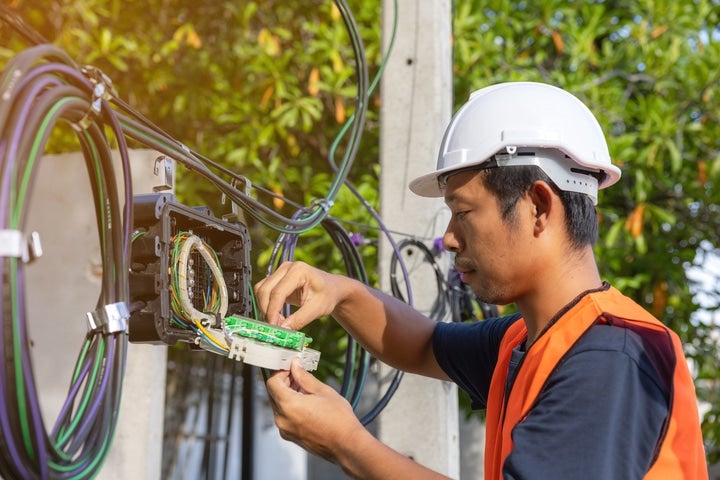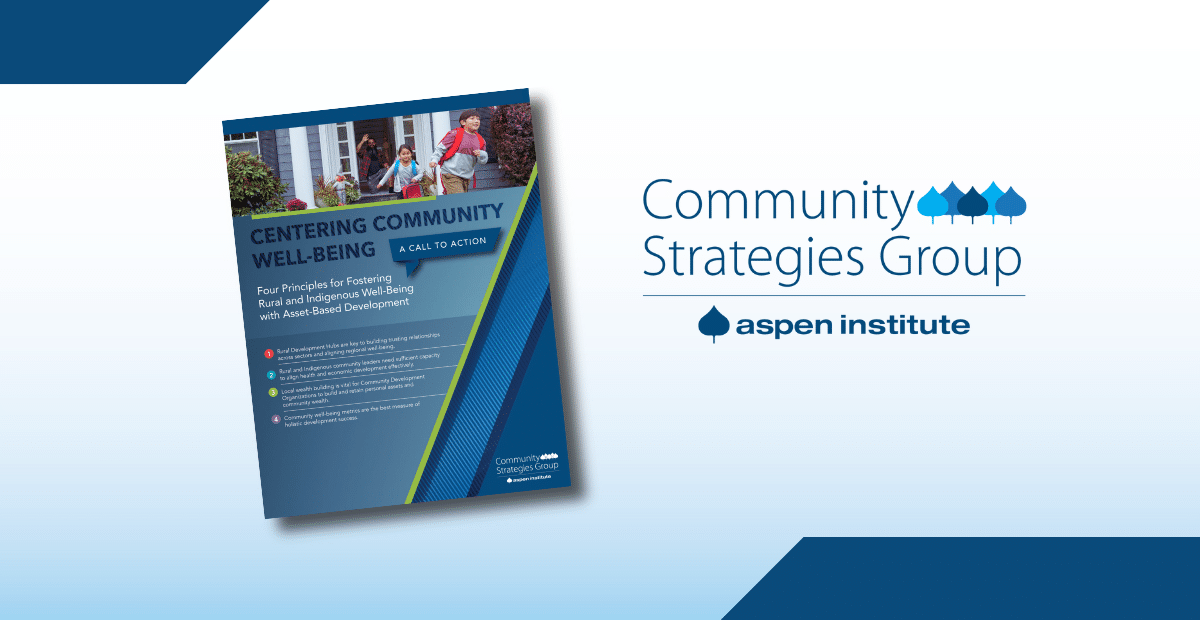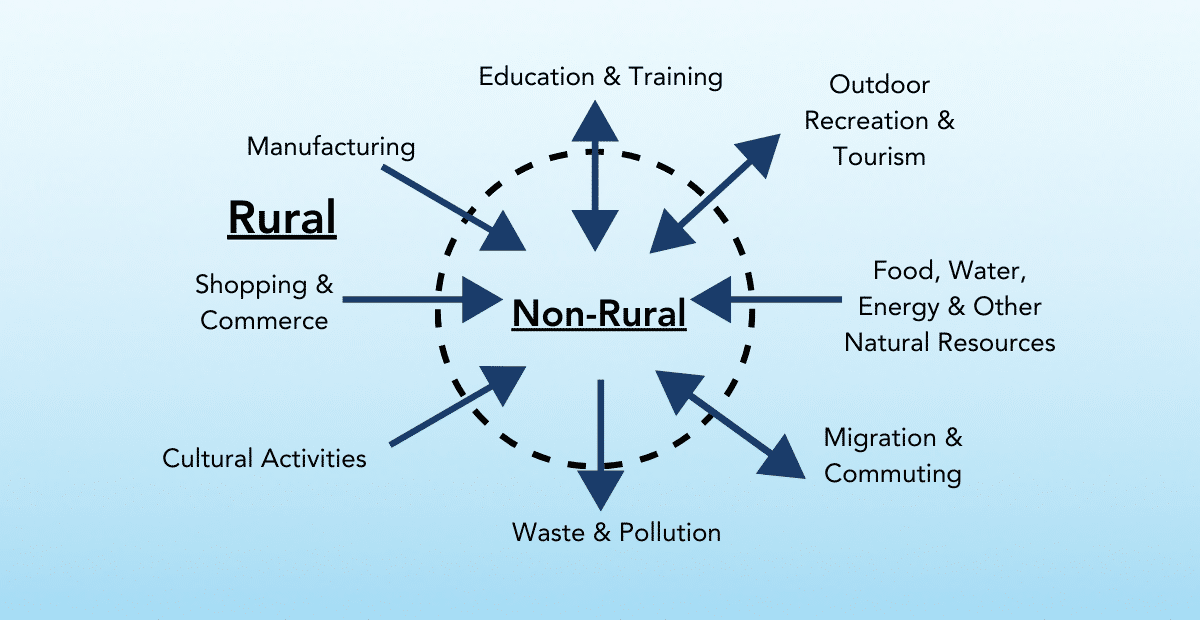On December 12, 2023, the ROADS collaboration hosted a panel at the annual Rural LISC Seminar to help rural communities understand and participate in the new federal funding available for high-speed broadband internet. Widely viewed as a once-in-a-generation investment in closing the digital divide, the 2021 Bipartisan Infrastructure Law’s package of broadband infrastructure deployment and adoption subsidy programs administered by NTIA, along with additional sources from USDA and FCC, are explicitly rural-facing with $62.4B available over the next five years to address rural connectivity gaps.
While the current round of investment in rural broadband access is centered on local decision-makers for the first time in the history of public subsidy for telecommunications, the panel – Benya Kraus Beacom, co-founder of Lead for America, broadband planning consultant Brian Rathbone, principal of Broadband Catalysts, Jerry Kenney, program officer for the T.L.L. Temple Foundation, Zaki Barzinjii, senior director for Aspen Digital, and Christa Vinson, moderator, and Rural LISC’s broadband lead – emphasized the deep need for fresh thinking and strategies from ecosystem players to better marshal local capacity to maximize capital absorption for broadband — and beyond.
Broadband Presents Unique Capacity Challenges Compared to Other Rural Investments
Despite significant improvements to federal broadband availability datasets, local communities – and individual residents – will have to self-advocate to ensure available public funding reaches every unconnected home. Brian Rathbone, who described a passion for digital equity that formed when he realized he could teach himself using the internet, every community in the country will encounter “embedded digital inequity,” where neighboring houses on the same block have access to different levels of service – or no access. “We have to accept the fact that many of these problems we do to ourselves structurally,” he said. Last-mile broadband dollars won’t get allocated to households in an area that’s indicated as served. Providers are reticent to share infrastructure and risk customer loss or expand a network to neighborhoods where the uptake has been historically low.
The great risk is these differences become deeply entrenched: “Communities can look different but at the end of the day the impact of digital inequity is the same,” said Zaki Barzinjii. “It means your community is ‘other-ized.’ It means you’re kept from the same types of opportunities and economic success than other communities are.” However, there are workable strategies to expose and resolve the underlying “othering” that marginalizes too many communities.
As Benya Kraus Beacom noted, pointing to the Lead for America network she co-founded of more than 200 field-based national service members who are “[anchoring local capacity] to the people that the community already trusts,” promising practices abound. She describes the patient building of “ecosystems of digital adoption leaders” that have led to real project capitalization and implementation. Among them: the formation of broadband action teams of cross-sector organizations creating a mission statement of digital equity for “our place” – whether that’s a low-to-moderate income residential community, or including digital inclusion as a baseline component of intake for human service organizations, or surveying “farm to farm” to subsequently launch a campaign, ‘We Believe in a Fiber Future,’ that helped arm a Minnesota local government with the evidence needed to justify the match dollars to compete for a state subsidy for broadband.
“As we tried to encourage a whole generation of people to move back to their rural communities [through Lead for America], access to broadband was one of the cornerstone challenges of how you scale and support talent returning home. We saw that if we’re going to try to do anything around economic development and rural prosperity, we would have to tackle this digital divide.”
— Benya Kraus Beacom, Lead for America Co-founder
For Lead for America, solutioning for broadband meant recognizing that technical assistance isn’t just about getting someone to write the grants, but “investing in the trust-building, the public pressure and awareness, even, that this is an urgent investment.” That comes first. Once organizations that didn’t see themselves as the backbone or champion for digital equity begin to recognize it as “their issue” and start incorporating it, new opportunities can follow.

This rural home has satellite and is paying more for lower quality internet and television service, while cheaper cable and fiber service is available across the street. This house is considered served and wouldn’t automatically be considered for current subsidy programs. For circumstances to change, this household “would have to be able to afford it and know they wanted it,” said Rathbone.
“Entry Points and No Dead Ends”
The panel’s other key insight was the very specific role philanthropy and adjacent funders can play. The process-driven stakeholder engagement and long timelines that constitute successful broadband deployment can in themselves provide the architecture for a new civic agenda – in other words, highly technical rural broadband access projects cannot and should not be separated from the civic, institutional and capacity challenges rural communities that need broadband also face. Getting the dollars absorbed and managed correctly necessitates a creative formula of place-based institutions driving positive change, their reach extended by high-capacity intermediaries, as Temple Foundation has done to address myriad local concerns from rural broadband access and water to child education and nutrition.
“We need expertise at a regional level at least – across all areas rural communities are dealing with — and simultaneously. Every time we invest in physical infrastructure like broadband without investing in the capacity of our institutions to do this work, we’re taking from what already exists, which is very minimum, and has been eroding over time. We have to be catalytic: these are billion-dollar challenges, and we have millions. There’s no million-dollar solution to billion-dollar challenges. At the heart of all of this sits capacity: how we’re defining it, how we’re investing in it. If we fund something by ourselves, we’re probably doing it wrong.”
— Jerry Kenney, T.L.L. Temple Foundation
Standing up durable collaboratives takes time, while philanthropy can adapt – and at the same time be selective. As Jerry Kenney explained, rural philanthropy could focus entirely on “downstream” socioeconomics impacts but – especially as it comes to operationalizing available broadband funding – the Temple Foundation and its peers are turning attention upstream. There’s not enough funding for the activity itself (broadband deployment) but philanthropy can resource the “system that does the thing,” he said.
This can involve launching new institutions. Looking to overcome structural disadvantages by filling in the missing tools or institutions, East Texas made ecosystem-enhancing investments that would sustain institutions over time; the foundation attracted three Community Development Financial Institutions (CDFIs) to the region where just three years before there were none. This was a purposeful choice over zooming in too closely and, for example, making a handful of small business loans.
“This is about the prioritization and sequencing, but we have to turn these problems around and think in terms of decades not months,” Jerry Kenney concluded. We have to “move away from projects and towards pathways.”
SPEAKER BIOS
Benya Kraus Beacom, Co-Founder of Lead for America
Benya Kraus Beacom is the co-founder of Lead for America (LFA), a nonprofit focused on building stronger local communities, primarily via its American Connection Corps, an AmeriCorps service program focused on advancing economic prosperity in rural and emerging communities. With a cultural background including rural Minnesota and Bangkok, Thailand, Benya moved back to the Minnesota town her family hails from to headquarter Lead for America. Benya is the youngest member elected to the Amnesty International USA Board of Directors, and is an appointee to Everyday Democracy, the Southwest Minnesota Housing Partnership, and Governor Walz and Lt. Governor Flanagan’s Young Women’s Cabinet. Benya earned a B.A. in International Relations from Tufts University and is an M.B.A. candidate at the University of Chicago’s Booth School of Business.
Brian Rathbone, Principal at Broadband Catalysts
Brian Rathbone is the co-founder of Broadband Catalysts, a rural-based broadband consultancy headquartered in Rutherfordton, North Carolina. Brian’s career includes 30 years of private sector consulting for mid-sized companies, manufacturers, dot coms, and NASCAR teams. After buying a home in rural North Carolina in the early 200s, Brian found that none of the different types of Internet access available were actually accessible to his new home, which led to a 20-year effort to acquire broadband service for his remote job. Brian worked at the statewide level with the North Carolina Department of Commerce Broadband Division to support the nation’s first open-source broadband map. He formed Broadband Catalysts after being invited by the Appalachian Regional Commission to create the federal agency’s first broadband planning primer and toolkit.
Christa Vinson, Senior Program Officer, Rural LISC
Christa Vinson leads the Broadband & Infrastructure pillar at Rural LISC, a portfolio that includes grantmaking and technical assistance to more than 60 community-based organizations in 25 states to implement digital adoption and skills programs that have reached thousands of vulnerable households, and millions more in grantmaking to support broadband infrastructure planning projects that have leveraged over $40 million in public and private funding, bringing new broadband service to more than 7,000 households. Her background includes 15 years of diverse experience in community, workforce, and economic development including as an independent consultant, state employee, and nonprofit leader. She co-founded NC Broadband Matters, a 501 c3 education and advocacy platform, to promote fast and reliable broadband for rural and marginalized communities in North Carolina in 2017 and continues to serve the organization in a volunteer role and was a founding board member of the North Carolina Employee Ownership Center. Christa holds a masters in economic development from the University of North Carolina at Chapel Hill, and a BA from Davidson College.
Jerry Kenney, Program Officer, Education and Economic Opportunity at T.L.L Temple Foundation
Jerry Kenney is a Program Officer for Education and Economic Opportunity at the T.L.L. Temple Foundation, which works alongside rural communities in East Texas to enhance community development and alleviate poverty. Jerry has a background in program design and implementation, classroom teaching and community development. He has served as Peace Corps Volunteer in Armenia, and has worked for Save the Children, Collaborative for Children, World Vision, and other such organizations. Jerry has a B.A. in Psychology from Austin College and a Master of International Affairs from Texas A&M University.
Zaki Barzinjii, Senior Director for Aspen Digital
Zaki Barzinjii is a Senior Director for Aspen Digital at the Aspen Institute, where he oversees a range of projects at the intersection of tech, policy, equity and justice for underrepresented communities. Zaki has a long public affairs career with experience in political campaigns, public service, and policy change at the state and federal level. He served in the White House as Senior Associate Director of Public Engagement and President Obama’s liaison to Arab-Americans, Muslims, Sikhs, and other minority. Prior to this role, Zaki worked as a tech policy advisor and Deputy Director of Intergovernmental Affairs for Governor Terry McAuliffe, and was the head of state and local government affairs for Hewlett-Packard Enterprise prior to joining the Aspen Institute.







